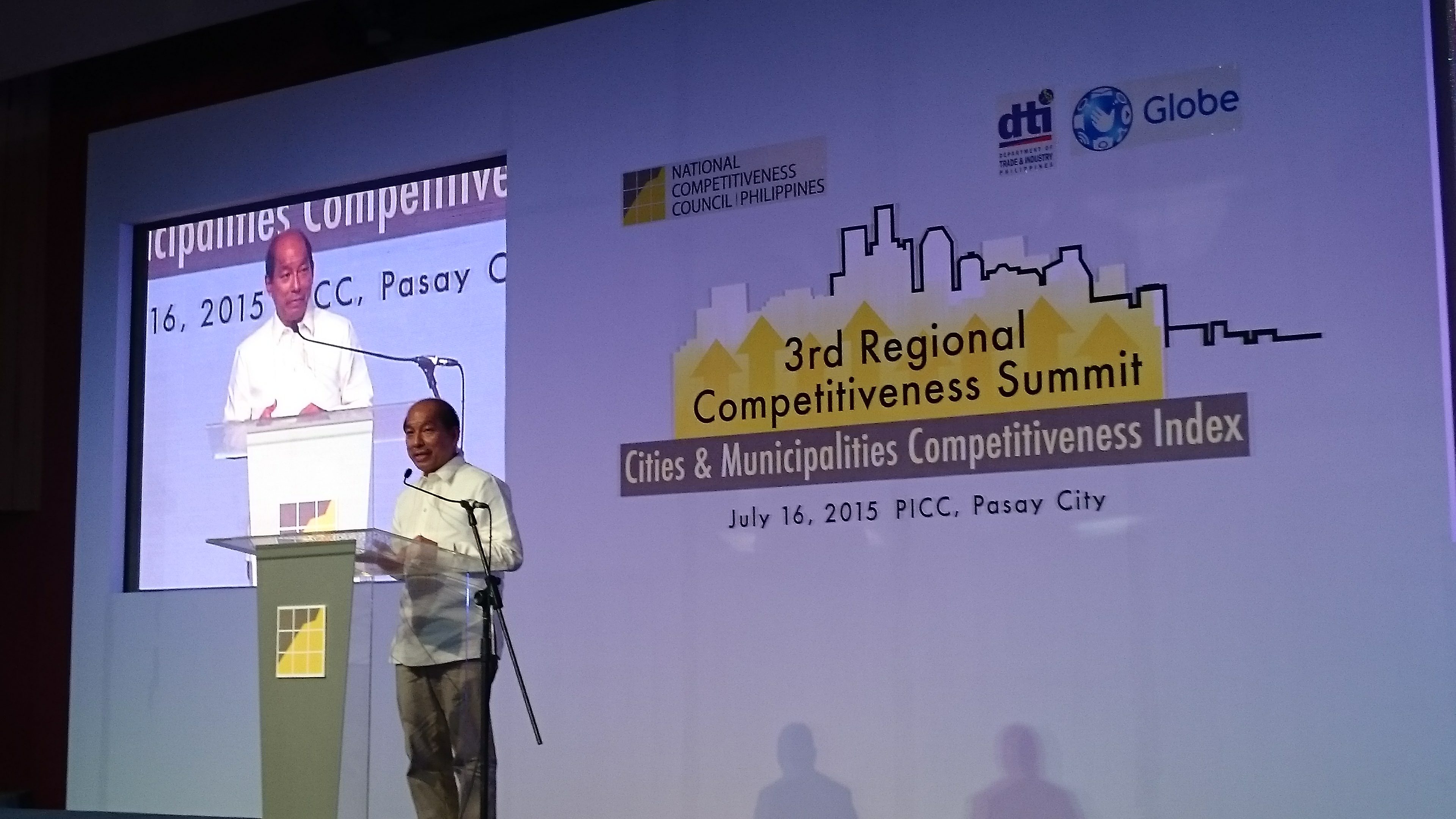SUMMARY
This is AI generated summarization, which may have errors. For context, always refer to the full article.

MANILA, Philippines – The National Competitiveness Council of the Philippines (NCC) on Thursday, July 16, acknowledged local government units (LGUs) for their part in making the country more and more competitive.
At its 3rd Regional Competitiveness Summit held in Pasay City, NCC recognized the City of Manila as the most competitive highly urbanized city, dethroning Makati City which won in 2014. Naga in Camarines Sur topped the component cities category.
Davao del Sur was awarded as the most competitive province, while Mambajao, Camiguin, topped the category for 3rd to 6th class municipalities. General Trias in Cavite was named the most competitive among 1st to 2nd class municipalities.
The awards were based on the NCC’s Cities and Municipalities Competitiveness Index (CMCI), a program which takes data submitted by LGUs and ranks them based on 3 pillars: economic dynamism (8 indicators), government efficiency (10 indicators), and infrastructure (10 indicators).
“The country bears the unique distinction of being the most improved country across 4 major ratings: ease of doing business, the Corruption Perceptions Index, the Economic Freedom Index and the Global Competitive Index,” said Budget Secretary Florencio Abad in his keynote speech.
It looks like finally, we’re doing something right, he added.
“The truth is none of these gains would have been possible if not for the leadership and committed efforts of our LGUs,” he said.

Not high enough
Despite these gains, the Philippines’ current ranking in global competitiveness is not high enough, according to Guillermo Luz, co-chairman of the NCC.
The Philippines is currently 52nd in the World Economic Forum Competitiveness rankings and needs to be in the 40s, he said from the sidelines of the event.
While the Philippines has comfortably moved out of the bottom third of most world rankings, it is still not within the target of moving into the top third by 2016, he added.
Still, Luz remained optimistic about the country’s chances, emphasizing that there are two more rankings this year where the Philippines can move up.
The process won’t be quick because we came from the bottom 30%, Luz explained.
“It is never going to be easy, but it is not impossible,” he said.

Data awareness
LGUs are falling in step with this goal, Luz said, citing the number of local governments that participate in the CMCI program.
When the program started in 2013, there were 122 cities and 163 municipalities that participated. For 2015, there are 142 cities and 978 municipalities participating in the index – or a total of 1,120 participating local governments out of 1,634 LGUs in the country.
Put another way, 68% of the LGUs have been covered for this year’s program from only 17% in 2013.
“Looking at the big picture, this increase tells us that the mayors are taking this seriously. They know its good to be measured and good to be competitive,” Luz said
The motivation for this, he explained, is the desire to attract new business. LGUs now understand that the business community relies on hard data when choosing where to invest.
“LGU officials are now aware of the importance of data and diagnostic tools to the business community. They know that they need to be measured on it as a way to be noticed by investors,” Luz said.
When a new store or franchise branch opens up in a municipality, it’s not by accident, it’s by design. Everything is measured, he explained.
To emphasize this and in a bid to get the remaining LGUs on board, the NCC launched a website, at the end of event, where the public can view all the data compiled by the MCMI.
“Everything there is data driven. Its very transparent, you’ll know who’s on it and who isn’t,” Luz said. – Rappler.com
The full Cities and Municipalities Competitiveness Index can be viewed on this website
Add a comment
How does this make you feel?
There are no comments yet. Add your comment to start the conversation.